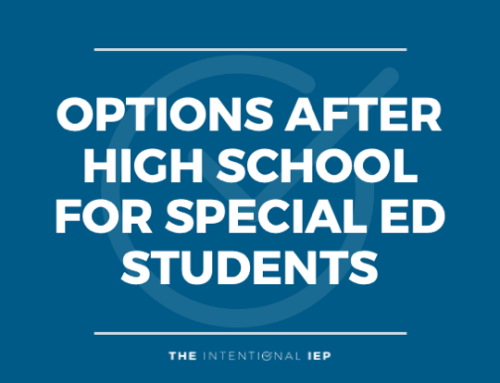Understanding how your students learn best enables you to create more appropriate, engaging lessons that they will be able to comprehend. But what are the ways most people learn?
Uncover the top three learning styles below and explore some of the lesser-known styles as well. Understanding them will help you become a better educator and also help you write better IEPs.
Different Types of Learning Styles
While most people learn best using a combination of the different types of learning styles, they usually have a predominant method that works best for them.
Here are the big three or the three most common learning styles that students thrive with in school and life.
Auditory Learning
Those people who are auditory learners thrive the most when they can hear the lesson. They are those students who do well in lecture-based classes. They enjoy and learn from audiobooks and discussions.
For these students, it is important to:
- read the directions aloud
- allow time for class or small group discussions
- provide them with audio for assignments
- let them use audiobooks
Visual Learning
While auditory learners like to hear the information, visual learners prefer to see it. They are the students who need to see the notes written on the board. They prefer written books to audiobooks.
For these students, it is important to provide them with:
- anchor charts
- clearly written directions
- pictures
- visual examples
Kinesthetic Learning
Your kinesthetic learners are those who learn best through doing. They are your hands-on lesson kids who thrive when they can move and manipulate pieces. They like to be up and moving around as they work as it helps them to remember the material better.
For the kinesthetic learners in your class, try:
- hands-on assignments
- lots of manipulatives
- experiments and activities
- movement-based activities
- alternative seating options and plenty of time to get up and move.
When you get to know your students, you’ll be able to create the best accommodations for them based on their learning style and preferences. Get access by joining The Intentional IEP here or clicking the image above.
Other Learning Styles You May Encounter
Linguistic or Verbal Learners
These learners rely heavily on linguistic skills to learn the material. They like to read about a subject, listen to a recording or podcast about it, and then take notes and discuss it. Their learning is very much language-based.
Give them as many opportunities as possible to explore the subject matter in ways that make sense for them. These may be your students who enjoy debating, thrive when you do turn and talks, and will happily listen to an audiobook while they read along with the written text.
 Logical Learners
Logical Learners
This type of learning style is also called a mathematical learning style, as it is very analytical in its approach. People with this type of learning style are very much into creating procedures and systems to work through problems.
These are your students who thrive when there is order and clear step-by-step directions are provided. They do not do as well on open-ended assignments or assignments that require a great deal of creativity.
Intrapersonal/Solo Learners
These learners prefer learning on their own. These are the students who prefer to do individual work over group projects. They would rather learn independently and work alone to discover answers and understand the material.
Group projects and, often, partner projects are challenging for these students because they prefer tackling assignments on their own. Be careful about placing an extroverted student or a student who has a tendency to not do their work with your intrapersonal learners. More often than not, the intrapersonal learner ends up doing the complete assignment on their own.
Interpersonal/Social Learners
Where your intrapersonal learners prefer to learn on their own, your interpersonal or social learners thrive in settings when they can collaborate with others, work in groups or teams, and play off of the social interaction with others. They are the direct opposite of your solo learners.
The more opportunities for focused social interactions that you can give these types of learners, the more productive they will be. There may be a need to refocus their attention if their conversations go astray, but they will excel when they have the opportunity to be front and center sharing what they know.
Naturalistic Learners
Naturalistic learners prefer to learn outside. They are quick to understand and engage with lessons that take place outdoors and involve some aspect of nature. They can seem like naturals at geography, weather, and botany.
Keep in mind that your students will likely have one dominant learning style, but they still need material presented in different formats. As you prepare lessons, make sure that you have something for each type of learner in the plan so that all of your students will succeed.






